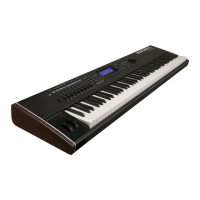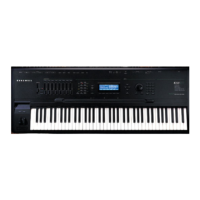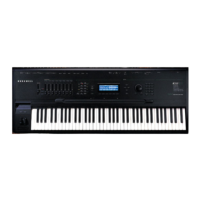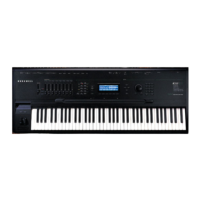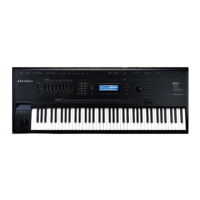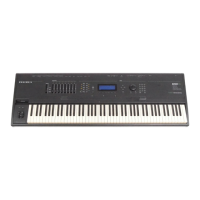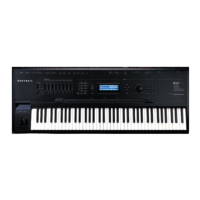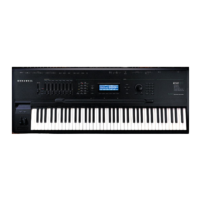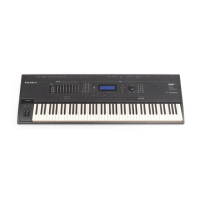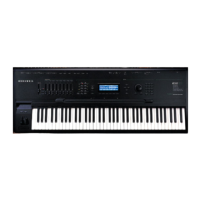These sensors are leaf switches. They have a flexible inner
"leaf", separated by spacers between two rigid outer
le~ves.
The
leaves are condiJctive.
Normally, the center leaf touches one of the
outer leaves making electrical contact. The action pin pressing
against the center leaf moves it
to
title
other contact. This changing
electrical contact .is used
to
determine when a key has been pressed.
Since the outer leaves are separated by some distance, it takes
the center leaf a while to move from one contact to the other. This
"time of flight" may
be
measured to see how hard the key was
pressed. A key pressed softly takes a relatively long time to move
the center leaf and make contact with the upper leaf, and
conversely, a key pressed hard takes a short amount of time. This
is
called "velocity sensing". The
K250
uses velocity sensing
to
express
loudness, timbre and other aspects of the sound.
The standard spacing of the sensors is determined by
piano-making convention. The standard "octave
span" (width of
12
.
keys)
on
a piano keyboard
is
6.5 inches. This
is
about 0.54 inches per
keys.
All
88
keys together span 47.5 inches. Since this
is
too large
to
economically put
on
one circuit board, the sensors are
on
two
modules each 24 inches long.
One handles the bass keys (left half of
the keyboard) and the other monitors the treble (right half).
3.4.6 -
Keyswitch
Boards
The
CPU
sends out a binary number pointing
to
the key
to
be
examined. The sensor modules decode this and return a code
representing the poisition of that key (up, down or
in
transit).
The 88 keys on the keyboard are normally stamped with a
number
on
the top of the wooden lever. These numbers range from 1
(at the extreme left, or bass end) to 88 (at the right or treble end).
They ascend
in
sequence from left to right.
3.4.7 -
Audio
Board
The Audio board functions simply
as
a distribution panel. The
Audio board takes the two outputs from the Channel board's mixer
and sends them
to
e~ternal
audio connectors.
Kurzwell
250
Service Manual, Chapter 3
3-
39

